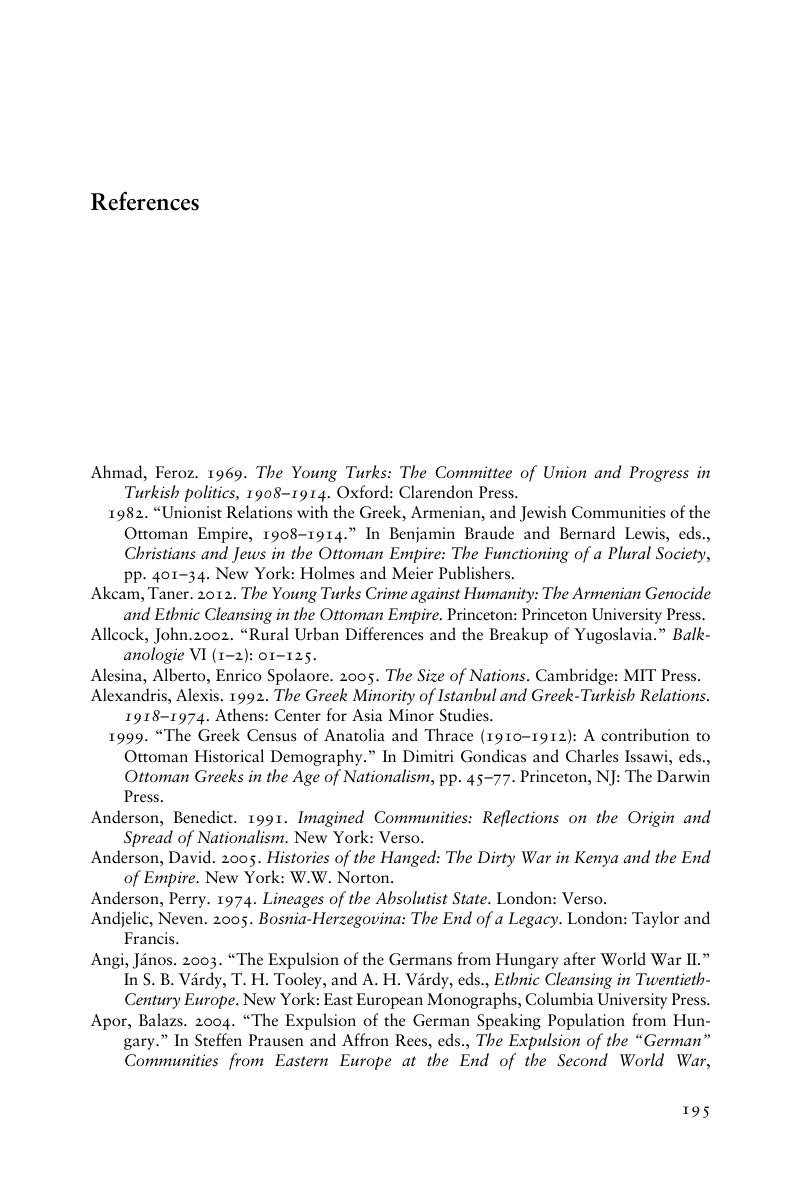Book contents
- The Roots of Ethnic Cleansing in Europe
- Problems of International Politics
- The Roots of Ethnic Cleansing in Europe
- Copyright page
- Dedication
- Contents
- Tables
- Figures
- Acknowledgments
- Introduction
- 1 Theory
- 2 Empirical implications I
- 3 Empirical implications II
- 4 Empirical implications III
- 5 Negative and atypical cases in Europe
- 6 Theoretical and empirical extensions
- Conclusion
- References
- Index
- References
References
Published online by Cambridge University Press: 05 July 2016
- The Roots of Ethnic Cleansing in Europe
- Problems of International Politics
- The Roots of Ethnic Cleansing in Europe
- Copyright page
- Dedication
- Contents
- Tables
- Figures
- Acknowledgments
- Introduction
- 1 Theory
- 2 Empirical implications I
- 3 Empirical implications II
- 4 Empirical implications III
- 5 Negative and atypical cases in Europe
- 6 Theoretical and empirical extensions
- Conclusion
- References
- Index
- References
Summary

- Type
- Chapter
- Information
- The Roots of Ethnic Cleansing in Europe , pp. 195 - 214Publisher: Cambridge University PressPrint publication year: 2016



